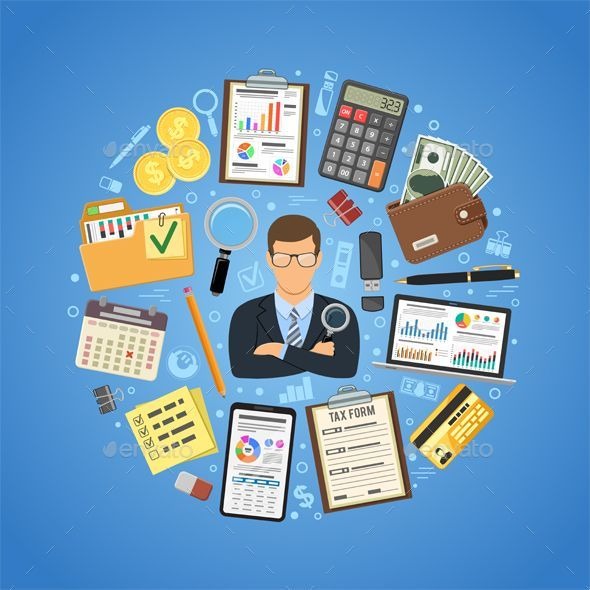In today’s competitive business world, a company’s success depends not only on product or service quality but also on financial discipline, payment transparency, and effective debt management.
Many businesses still track customer balances and receivables manually — using Excel sheets or disconnected programs — which leads to errors, time loss, and financial risk.
However, a new era has begun: ERP (Enterprise Resource Planning) systems now fully automate customer balance tracking, debt control, and financial flows, ensuring a secure, transparent, and efficient financial management model.
ERP is not just software — it is the “brain” of the organization, integrating all financial and operational processes into one intelligent ecosystem.
The Essence and Philosophy of ERP

ERP (Enterprise Resource Planning) integrates all departments — finance, sales, production, logistics, HR, and customer relations — into a single digital platform.
Its core principles include:
- Centralization: all data is stored in one place;
- Automation: human errors are minimized;
- Analytics: the system not only stores information but also analyzes it to drive decisions.
ERP transforms fragmented workflows into a unified, controlled structure that ensures transparency, predictability, and operational efficiency.
Challenges of Traditional Debt Tracking
Traditional debt tracking methods come with major limitations:
- Manual data entry errors;
- Lack of synchronization between departments;
- Significant time loss in reconciling balances;
- Delayed detection of overdue debts;
- Decision-making based on outdated data.
As a result, liquidity and reliability decrease.
ERP systems solve these problems through structured, automated, and transparent financial management.
Managing Customer Balances with ERP
In ERP systems, each customer has an individual financial profile that includes:
- Invoice and payment history;
- Current debt and credit limits;
- Payment terms and interest rates;
- Discounts, penalties, and contract conditions;
- Customer risk score and behavioral trends.
The system automatically analyzes this data and triggers alerts when necessary.
Example:
“Customer A is 20 days overdue and has reached 95% of the credit limit. Sales should be paused.”
This makes debt control proactive rather than reactive.
Companies can detect risks early and prevent financial losses — resulting in optimized debt turnover and stable cash flow.

Advantages of ERP Automation
ERP systems provide companies with strategic benefits:
Real-time monitoring: accounting and management share synchronized
data;
Error reduction: minimal manual input;
Risk prevention: early alerts for overdue accounts;
Instant reporting: financial summaries generated within seconds;
Resource efficiency: fewer hours spent on manual reconciliation.
For instance, a “customers exceeding credit limits” report can be generated with a single click — what used to take hours now takes seconds.
Ensuring Secure and Transparent Financial Flow
ERP offers a high level of data security.
Each employee has access only to authorized sections via role-based permissions, and every operation leaves an audit trail, making unauthorized modifications impossible.
Cloud-based ERP systems further protect against data loss — even if the company’s server fails, all information is safely backed up in the cloud.
Thus, ERP serves as a fortress of financial security while providing complete transparency and accountability.
ERP and Bank Integration
Modern ERP systems integrate directly with banks, allowing for real-time financial operations such as:
- Executing payments directly from ERP;
- Automatic synchronization of bank statements;
- Unified cash flow reporting;
- Instant balance updates across all accounts.
Example:
“Today, 30,000 AZN was received from five customers, while three customers remain overdue for over 15 days.”
Such integration provides complete visibility and enables management to adjust financial strategies dynamically and accurately.
ERP + CRM: Merging Finance and Customer Relationships
When ERP integrates with CRM systems, businesses can manage financial and customer data together.
A sales manager can instantly see a client’s debt history, payment behavior, and risk profile before offering new terms.
This creates two key advantages:
- Smarter sales decisions: risky clients are identified early;
- Transparent communication: customer trust increases.
ERP + CRM together form not just an accounting tool, but an intelligent management platform that improves both financial stability and client loyalty.
Artificial Intelligence and the Future of ERP
Modern ERP systems increasingly incorporate Artificial Intelligence (AI) and Machine Learning (ML) technologies.
AI analyzes customer payment behaviors and predicts potential risks.
Example:
“Customer B has delayed payments by an average of 7 days over the past four months. Probability of future delay: 82%.”
AI also generates cash flow forecasts, predicting inflows and outflows for better liquidity planning.
This enables management to make data-driven financial decisions and minimize uncertainty.
ERP in Azerbaijan: Local Implementation and Impact
ERP adoption in Azerbaijan has grown rapidly in recent years.
While large corporations pioneered its use, today SMEs (small and medium enterprises) are increasingly implementing ERP to improve efficiency.
Practical results include:
- 30–40% reduction in overdue debts;
- 60% faster accounting operations;
- 70% fewer financial errors;
- Reporting time reduced from hours to minutes.
Government-led digital initiatives such as e-invoicing and e-tax systems make ERP integration easier and strengthen the digital transformation of local businesses.
This enhances transparency, compliance, and competitiveness both domestically and internationally.
The Future of ERP: Cloud, Mobile, and Integrated Ecosystems
ERP technology continues to evolve. The next generation of systems will be:
- Cloud-based: accessible from anywhere;
- Mobile-enabled: manage finances from smartphones;
- IoT-integrated: connect with real-time operations;
- Blockchain-supported: ensure fully transparent transactions.
These innovations will turn ERP into the foundation of an intelligent financial ecosystem, where automation and analytics drive every decision.
Conclusion
ERP systems mark a new era in customer balance and debt management. They:
- Improve accuracy and transparency,
- Reduce financial risks,
- Accelerate decision-making,
- Guarantee secure and sustainable financial flows.
Implementing ERP is not just a technological upgrade — it’s a transformation of management culture.
Companies adopting ERP gain resilience, efficiency, and strategic foresight.
ERP is the language of financial intelligence and the future of business management.
